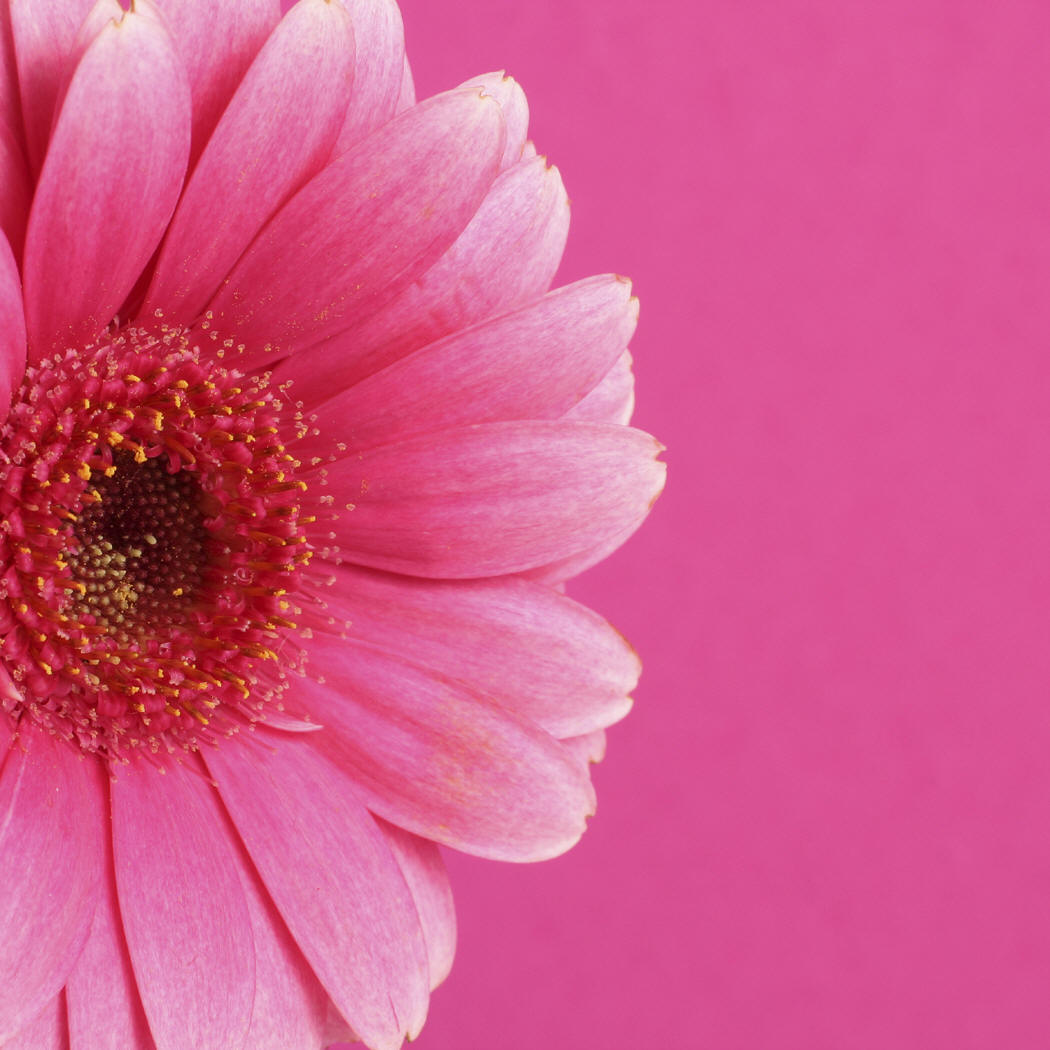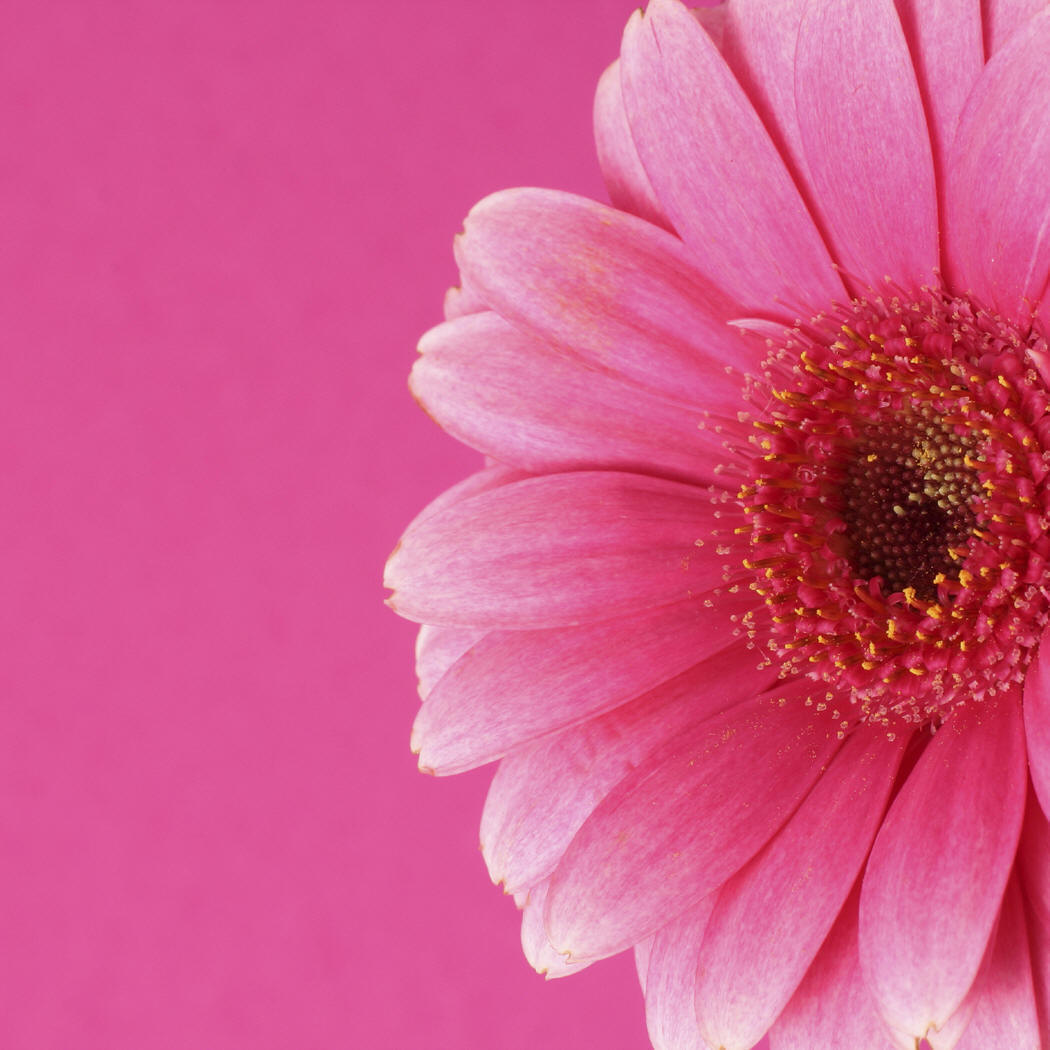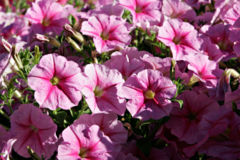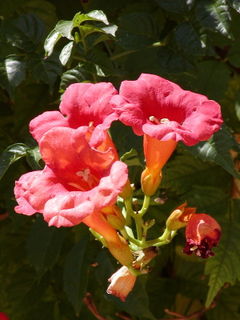|
Nutrition "The Drive-Thru Method"
|


|
Ruby-throated Hummingbirds are considered nectivores and insectivores, meaning that they acquire their nutrition from the nectar of flowers and from insects. These birds are always on the go, so they often scoop up insects as they are flying through the air. However, their primary food source is nectar from a wide assortment of flowering plants. They hover above the flowers and use their long beaks to suck out nectar, spending only a few seconds at each flower. And you thought McDonald's was fast food! The only downside to this "drive-thru" method is that they can end up visiting up to 5000 flowers a day! Here are some characteristics of flowers that attract hummingbirds: - red or orange petals - often long and tubular (to fit their long, narrow bill) - often hang down and point downward (allow for easy access for the hovering bird)
Some flowers that are enjoyed by Ruby-throated Hummingbirds:
Hibiscus Honeysuckle Lilac
Petunias Trumpet Vine
Once their food is consumed, it travels through a full digestive tract. Digestion begins in the muscular stomach, where acids break down the hard parts of any insects ingested. The food passes down through the duodenum where enzymes aid in chemical digestion. Then it moves into the small intestine where the nutrients are absorbed into the circulatory system and then distributed to the rest of the body. Finally, the indigestible material moves through the large intestine and then eventually exits the body as waste.
BONUS QUESTION!!
With these excessive eating habits, and their miniscule size, Ruby-throats end up consuming how much of their body weight in food each day? A) half of their body weight B) twice their body weight C) quarter of their body weight D) five times their body weight E) three times their body weight
|







